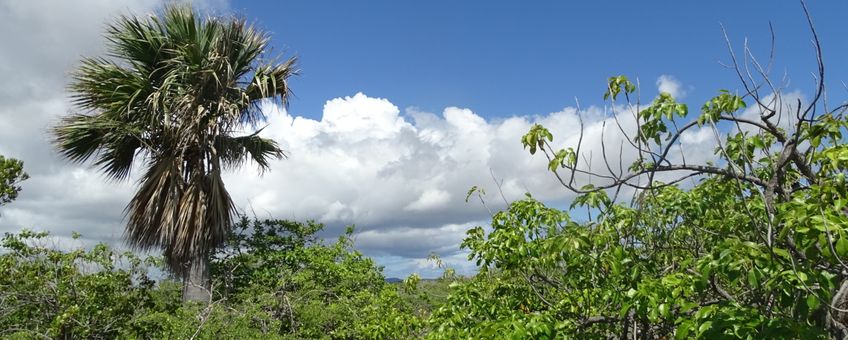
Evaluation of vegetation development on the Dutch Caribbean islands
Carmabi, Wageningen Environmental ResearchThe evaluation of the conservation status of the terrestrial habitat types of the Dutch Caribbean islands clearly showed the poor status of many terrestrial plant communities, as a result of overgrazing and urban development. Repeating vegetation maps and vegetation plot descriptions (so-called vegetation relevés) provides profound insight in the vegetation succession under different environmental conditions. Therefore, terrestrial monitoring is needed for evaluating future changes in the habitat conservation status. Vegetation data can be used as an indicator of abiotic and structural changes in the landscape and provides an important basis for mapping the habitat of species.
In November 2019, vegetation scientists from Wageningen Environmental Research and Carmabi visited Bonaire, to study the succession of the vegetation since 1999. Several plots that were described twenty years ago were revisited and resurveyed. It was demonstrated that most sites are still heavily overgrazed by goats and donkeys, especially in the Washington-Slagbaai National Park. In a few plots with low grazing pressure, the understory contained more grasses, sedges and herbs, as well as juvenile shrubs and trees. This indicates that in case grazing is restricted, wooden plant species are able to recover quickly, preceded that mature shrubs and trees are present in the vicinity.

A similar study in the Christoffelberg National Park on Curaçao showed the quick suppression of unpalatable shrubs and the development of evergreen wooded plants, once goats have been removed. On Bonaire, relict populations of the rare and most endangered wooden species were mainly seen on the middle and high limestone terraces, in areas that are seriously threatened by urban development plans. Populations like these are essential for restoration of degraded habitats, and therefore there is urgent need to establish protected nature areas on these limestone terraces.
In the context of this project, Wageningen Environmental Research and Carmabi are digitizing historical vegetation descriptions and maps, and have started to resurvey plots on the Dutch Caribbean islands. Vegetation relevés are stored in a digital database that will be made available through the Dutch Caribbean Biodiversity Database website.
Text: John Janssen & Joop Schaminée, Wageningen Environmental Research and Erik Houtepen & John de Freitas, Carmabi
Pictures: Joop Schaminée (lead photo: Endemic Sabal palm, growing in a shrubland on limestone with Metopium brownii and Haematoxylon brasiletto); Johan van den Blerk
